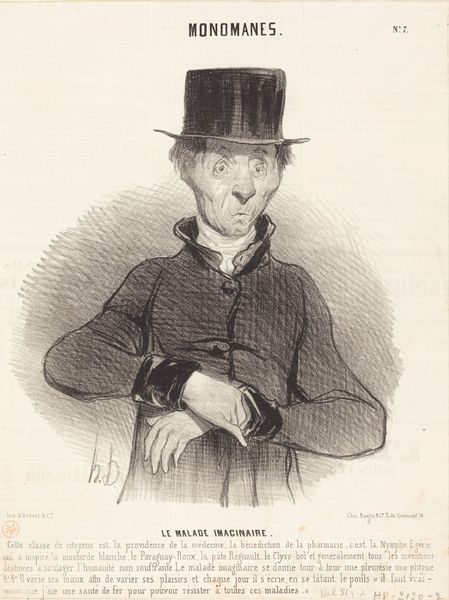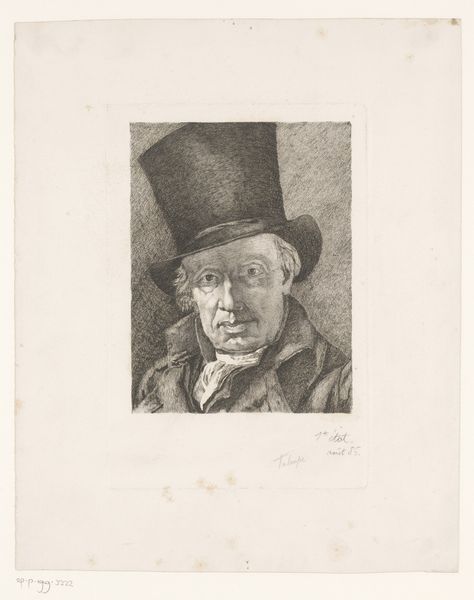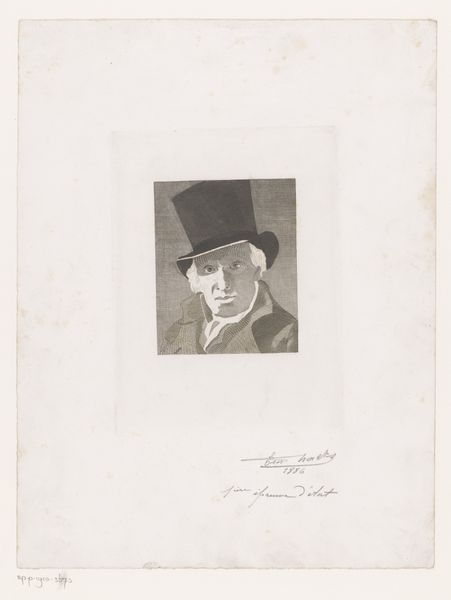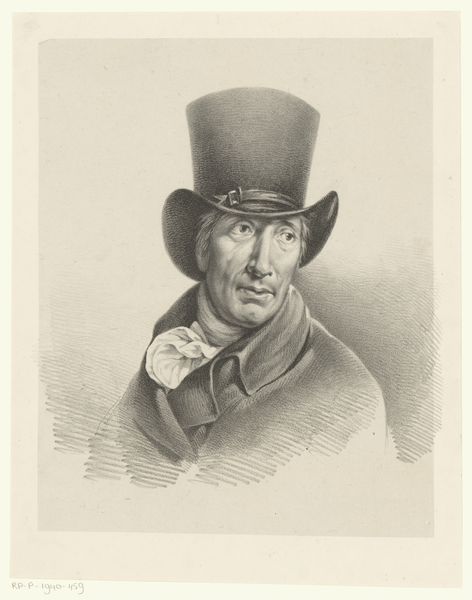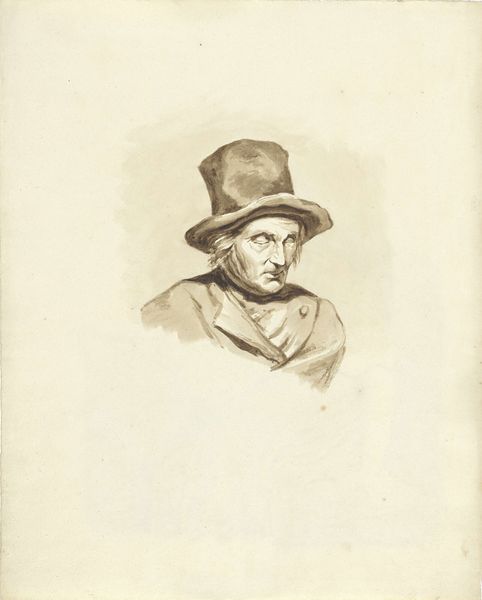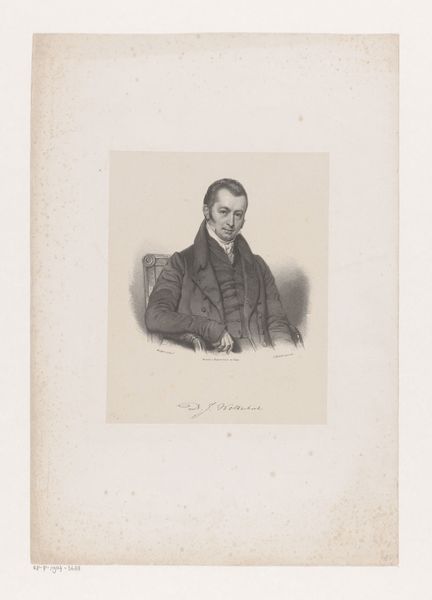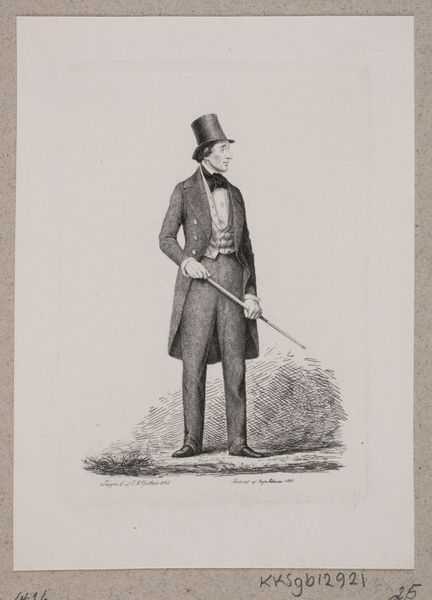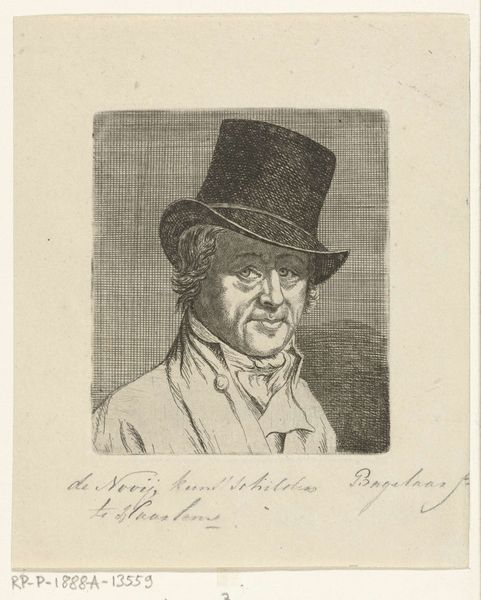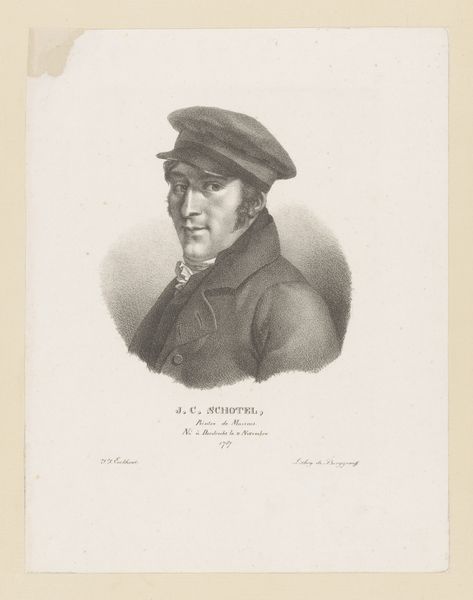
drawing, print, pencil, engraving
#
portrait
#
pencil drawn
#
drawing
#
neoclassicism
# print
#
pencil
#
engraving
Dimensions: height 309 mm, width 236 mm
Copyright: Rijks Museum: Open Domain
Curator: Here we have the "Portret van Michiel Versteegh," made in 1822, attributed to Guillaume Philidor Van den Burggraaff. It’s a pencil drawing, print and engraving currently held at the Rijksmuseum. Editor: My initial impression is one of reserved strength. The high contrast between the dark clothing and light background creates a focal point that immediately draws you into the sitter's gaze. Curator: Right, and this portrait becomes incredibly interesting when we consider it within the evolving bourgeois class of the Netherlands in the early 19th century. Versteegh's attire and direct gaze project a sense of self-assuredness and burgeoning influence, reflective of broader shifts in social power. Editor: It's fascinating how the portrait also intersects with the prevailing ideals around masculinity at the time. His serious demeanor and somewhat imposing hat might represent aspirations for respectability in the shifting social landscape. The visual narrative hints at the complexities of identity. Curator: Absolutely, the clothing, in particular, isn't just a detail. It’s a sartorial assertion of self, especially considering Versteegh's involvement in public life. His dress and posture broadcast his public persona and role, cementing ideas about class and the performative nature of public life. Editor: I also notice the level of detail Van den Burggraaff achieved. There is great care and craft displayed in the meticulous rendering of his face, particularly capturing a hint of knowingness in his eyes. It feels intimate even across the gulf of time. Curator: That's true, it brings attention to the fact that portraiture wasn't only about replication but also about asserting power relations and constructing public identities through imagery. The image reflects the subject’s societal position while perhaps simultaneously reinforcing or even subtly challenging social hierarchies through its creation. Editor: Indeed. By looking at who this person was, the image offers us insights not just into their world but, more importantly, into our assumptions, privileges, and blind spots. Curator: It becomes a document not only of a man, Michiel Versteegh, but a time and social framework.
Comments
No comments
Be the first to comment and join the conversation on the ultimate creative platform.
